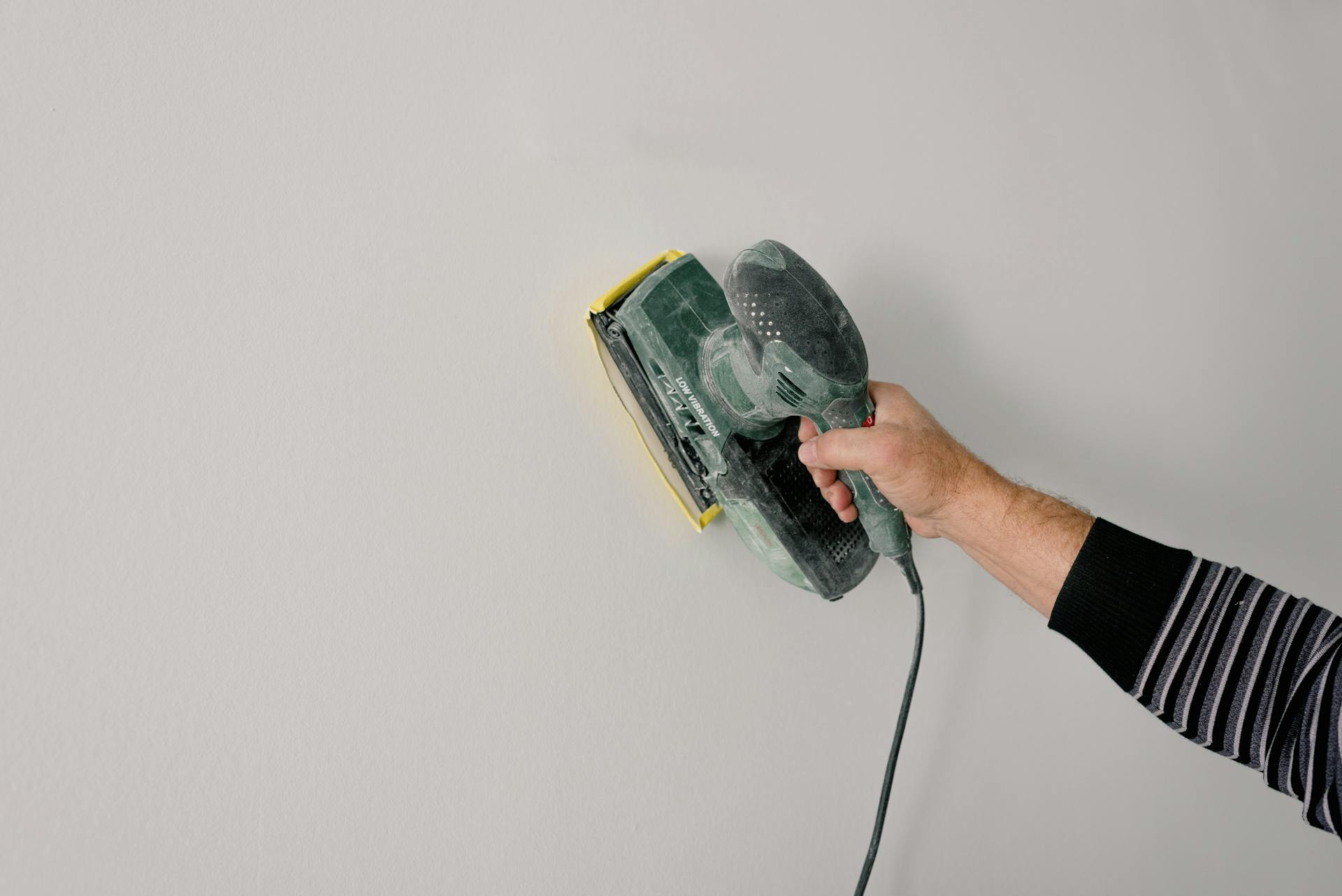
A home equity loan can be a great way to tap into the value of your home, but navigating the terms can be overwhelming. The interest rate on a HELOC can be variable, meaning it can change over time.
To make the most of a HELOC, it's essential to understand the repayment terms. Typically, HELOCs have a draw period of 5-10 years, during which you can borrow money as needed.
The repayment period, on the other hand, can last up to 20 years. This means you'll have a long time to pay back the loan, but you'll also be paying interest on the borrowed amount for that entire period.
It's also worth noting that HELOCs often have a minimum payment requirement, which can be a fixed amount or a percentage of the outstanding balance.
Key Information
A HELOC allows you to borrow cash from the value of your home, preferably for wealth-building expenditures like home improvements.
Most lenders will let you borrow up to 85% of the value of your home, minus what you owe.
You typically have 10 years to withdraw cash from a home equity line of credit, paying back only interest, and then 20 more years to pay back your principal plus interest at a variable rate.
To qualify, lenders usually want you to have a credit score over 620, a debt-to-income ratio below 40%, and equity of at least 15%.
Here are the common requirements for a HELOC:
Getting a Heloc
Getting a HELOC can be a bit daunting, but don't worry, I've got the lowdown. To get a HELOC, you'll need to shop around and compare rates from different lenders.
Most borrowers should get at least three quotes from different lenders, so don't just stop at one bank or financial institution. You might want to start with a bank or credit union where you already have an account, as they may offer special rates or incentives for existing customers.
A mortgage broker can also be a good option, as they have relationships with multiple lenders and can help you find the best deal. However, be aware that they typically get paid by the lender you choose.
To qualify for a HELOC, you'll generally need a debt-to-income ratio of 40% or less, a credit score of 620 or higher, and a home value that's at least 15% more than you owe.
Here are the typical HELOC requirements to keep in mind:
- Debt-to-income ratio: 40% or less
- Credit score: 620 or higher
- Home value: at least 15% more than you owe
Requirements
To get a HELOC, you'll need to meet certain requirements, which can vary from lender to lender. However, there are some general guidelines to keep in mind.
You'll typically need a debt-to-income ratio of 40% or less. This means that a significant portion of your income should be going towards other debts, not just your mortgage.
A credit score of 620 or higher is usually required for a HELOC. This shows lenders that you're responsible with credit and can manage your debt.
Your home's value should be at least 15% more than the amount you owe on it. This ensures that the lender has some security in case you default on the loan.
How to Get
To get a Home Equity Loan or HELOC, you'll want to shop around and compare rates from multiple lenders. Loans can vary significantly from one lender to the next, so it's essential to get at least three quotes.
Start by reaching out to your existing bank or financial institution, as they may offer special rates or incentives for existing customers. You can also consider using a mortgage broker, who has relationships with multiple lenders and gets paid by the lender you choose.
For loans under $100,000, a small community bank or credit union may offer the best deal. Don't focus solely on interest rates, ask about closing fees and other costs to make a fair comparison.
Talk to local and national banks and mortgage brokers for larger loans, such as those over $150,000.
Pros and Cons
A HELOC can be a great option for home repairs and renovations, which can actually increase your home's value. You could also get a better rate with a HELOC than with an unsecured loan.
The interest on your HELOC may be tax-deductible if you use the money to buy, build, or substantially improve your home, and the combination of the HELOC and your mortgage don't exceed stated loan limits, according to the IRS.
HELOCs and home equity loans can be a lower-cost option compared to many other types of loans. You can borrow a relatively large amount of cash, which can be helpful for big projects.
However, there are some risks to consider. Because your home serves as collateral, you're at risk of foreclosure if you default on your loan payments. This can be a serious consequence, so it's essential to carefully review the terms and conditions before signing up.
Using a HELOC can also put you in a difficult situation if the real estate market takes a dip. If you owe more on your loan than your home is worth, you'll be "underwater" – a financial predicament you'll want to avoid.
Here's a summary of the pros and cons:
- Lower cost than many other types of loans
- The ability to borrow a relatively large amount of cash
- Potential tax breaks if you use the funds on the home
- Risk of foreclosure if you default
- Potential to be "underwater" if the real estate market declines
Payment and Rates
To get the best HELOC rate, shop around with at least three lenders and check if your bank or mortgage provider offers discounts to existing customers. You should also take note of introductory offers, which may have initial rates that expire at the end of a given term.
To lock in a fixed rate and term, consider a lender's Loan-in-a-Line feature, which allows you to convert your variable rate balance to a fixed rate with a fixed term. This can provide stability, savings, and flexibility.
HELOC rates generally fluctuate with the market, but you can potentially save money by locking in a low rate. To calculate your HELOC payments, use a HELOC payment calculator or consider the following options:
- Our standard HELOC has a minimum payment of 1% of the balance (during the draw period), or $100, whichever is greater.
- With an interest-only HELOC, you pay just the interest on the outstanding balance, or $100, whichever is greater.
Home equity rates vary depending on the lender, with Advantis offering competitive rates from 7.65% to 11.15% variable.
Monthly Payment Estimate
Calculating your monthly payments for a HELOC is a crucial step in understanding the financial commitment. Your minimum payment will be 1% of the balance, or $100, whichever is greater.
You can choose between two payment options with Advantis: a standard HELOC with a minimum payment of 1% of the balance, or an interest-only HELOC where you pay just the interest on the outstanding balance, or $100, whichever is greater.
Here are the details of each payment option:
The interest-only option can be a good choice if you want to minimize your monthly payments, but keep in mind that you'll still be paying interest on the outstanding balance. If you're unsure which option is best for you, consider consulting with a financial advisor.
Rates
Rates play a crucial role in determining how much you'll pay on your HELOC. Most HELOC rates are indexed to the prime rate, which is the lowest credit rate lenders offer to their most attractive borrowers.
The prime rate is currently 7.5%, and it's been steady at that rate for a while now. You can check the current prime rate to get an idea of what your HELOC rate might be.
Your credit score, existing debt, and the amount you want to borrow will all impact the rate you're offered. Lenders add a margin to the prime rate to calculate your rate, which can range from 1.5% to negative margins for introductory offers.
Here's a breakdown of the factors that affect your HELOC rate:
- Credit score
- Existing debt
- Amount borrowed
You can shop around with at least three lenders to find the best rate for your situation. Check your bank or mortgage provider for discounts, and look for lenders that offer fixed-rate options to protect your loan from rising interest rates.
The interest rates for HELOCs vary by lender, but most have adjustable rates that adjust with the baseline interest rates. However, they are typically lower than credit card or personal loan rates and closer to mortgage rates.
Frequently Asked Questions
How long of a term is a HELOC?
A HELOC typically has a variable term, with repayment periods ranging from 5 to 20 years, and sometimes longer. The exact term length may vary depending on the lender and borrower agreement.
How long is the average HELOC term?
The average HELOC term typically spans 10 years for withdrawing funds and up to 20 years for repayment. This timeframe allows for flexible borrowing and repayment options.
Are all HELOCs 30 years?
No, not all HELOCs last 30 years - terms typically range from 5 to 30 years. Most HELOCs are open credit lines with flexible repayment terms.
What happens to a HELOC after 10 years?
After 10 years, a HELOC typically transitions from the draw period to the repayment period, where you'll start paying back borrowed amounts with interest over a set term
Is HELOC no payment for 10 years?
No, HELOCs do not offer 10 years of no payments. During the 10-year draw period, you can borrow funds, but you'll still need to make payments on the interest accrued.
Sources
- https://www.nerdwallet.com/article/mortgages/heloc-home-equity-line-of-credit
- https://www.regions.com/personal-banking/home-equity/home-equity-line-of-credit
- https://www.becu.org/loans-and-mortgages/home-loans/home-equity
- https://www.advantiscu.org/loans/home-equity
- https://www.investopedia.com/mortgage/heloc/
Featured Images: pexels.com


